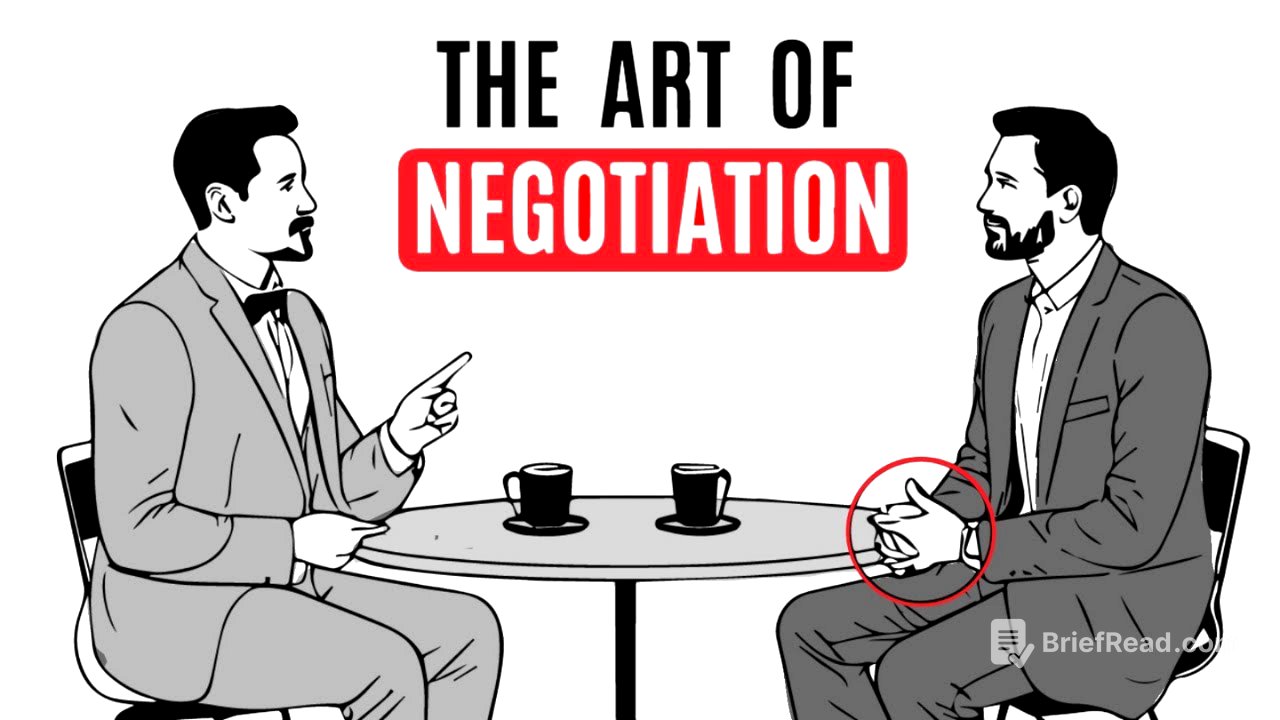TLDR;
This video summarizes the key lessons from the book "Getting to Yes" by William Yuri and Roger Fisher, focusing on a four-step framework for effective negotiation. It emphasizes understanding interests over positions, using fair standards, inventing options for mutual gain, and separating people from the problem. The video also addresses handling dirty tactics, power imbalances, and personal attacks in negotiations, advocating for building relationships and developing a strong BATNA (Best Alternative To a Negotiated Agreement).
- Negotiation is about finding mutually beneficial solutions, not winning or losing.
- The four-step framework includes focusing on interests, using fair standards, inventing options, and separating people from the problem.
- Building relationships and developing a strong BATNA are crucial for handling difficult negotiation scenarios.
Introduction to Negotiation [0:00]
The video introduces the core concept of negotiation as presented in the book "Getting to Yes" by William Yuri and Roger Fisher. It challenges the common perception of negotiation as a win-lose scenario or simply splitting differences. Instead, it frames negotiation as a process of finding solutions that satisfy both parties involved, illustrated through examples like resolving a window dispute in a library, dividing a cake fairly, and understanding the underlying needs of children arguing over an orange. The key takeaway is that successful negotiation focuses on mutual satisfaction and preserving relationships.
Focus on Interests, Not Positions [1:58]
This chapter emphasizes the importance of understanding the underlying interests of each party rather than fixating on their stated positions. Using the example of the library window dispute, the video explains that by asking "why" each party wants what they want, a mutually beneficial solution can be found. It suggests that discovering and openly discussing these underlying interests fosters understanding and makes the other party more receptive. Communicating your own interests and framing them as potential options for agreement is also crucial.
Use Fair Standards [3:09]
The video explains that objective criteria should be used to resolve conflicts. Instead of arguing back and forth, the video suggests using objective criteria to decide. Objective criteria are unbiased rules that don't depend on personal opinions, like market prices, legal requirements, expert opinions, or fair standards that both parties agree on. By focusing on fair standards, a clash of interests can be turned into a shared goal.
Invent Options for Mutual Gain [4:54]
This section highlights the importance of brainstorming and inventing creative solutions that benefit all parties involved. Referring back to the orange example, the video suggests that differences in needs or desires can actually lead to innovative solutions. The video advises to get together with all parties and brainstorm all possible solutions, letting the ideas flow freely without judging or picking any of them in the first stage.
Separate the People from the Problem [6:09]
The video stresses the importance of treating negotiators as people first, separating their personal feelings and viewpoints from the problem at hand. It advises to be soft on the person and hard on the problem. Building a relationship with the other side before negotiations begin is presented as a key strategy to prevent people problems, as familiarity increases the likelihood of a successful outcome.
Dealing with Difficult Tactics [7:55]
This chapter addresses how to handle situations where the other party uses dirty tactics, holds more power, or resorts to personal attacks. For dirty tactics, the video advises directly mentioning the tactic without personal attacks. When facing a more powerful party, developing a strong BATNA (Best Alternative To a Negotiated Agreement) is crucial to increase your leverage. In the event of personal attacks, the video recommends using "negotiation Jujitsu" by sidestepping attacks, asking for advice, and inviting criticism to redirect the conversation towards a constructive resolution.
Conclusion: The Essence of Negotiation [10:45]
The video concludes with a story illustrating the true essence of negotiation: collaboration and mutual satisfaction. It emphasizes that focusing on "winning" misses the point; the real goal is to work together to find a solution that addresses the interests of all parties involved.
